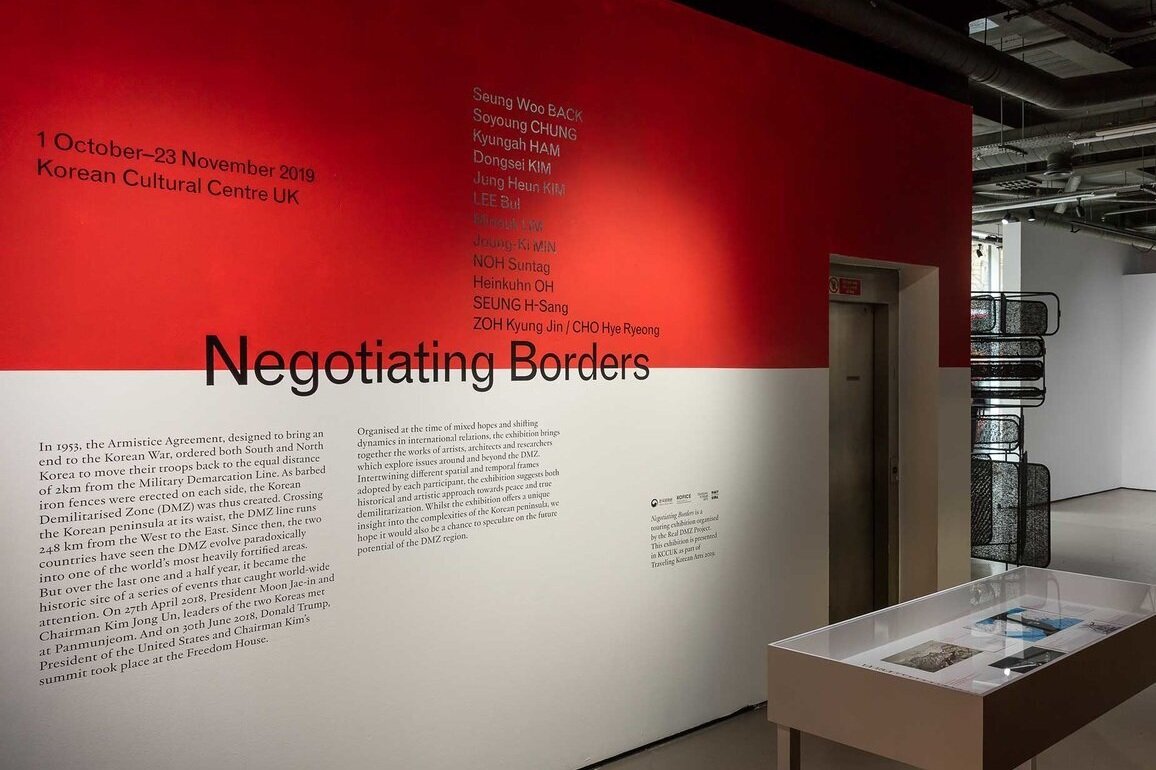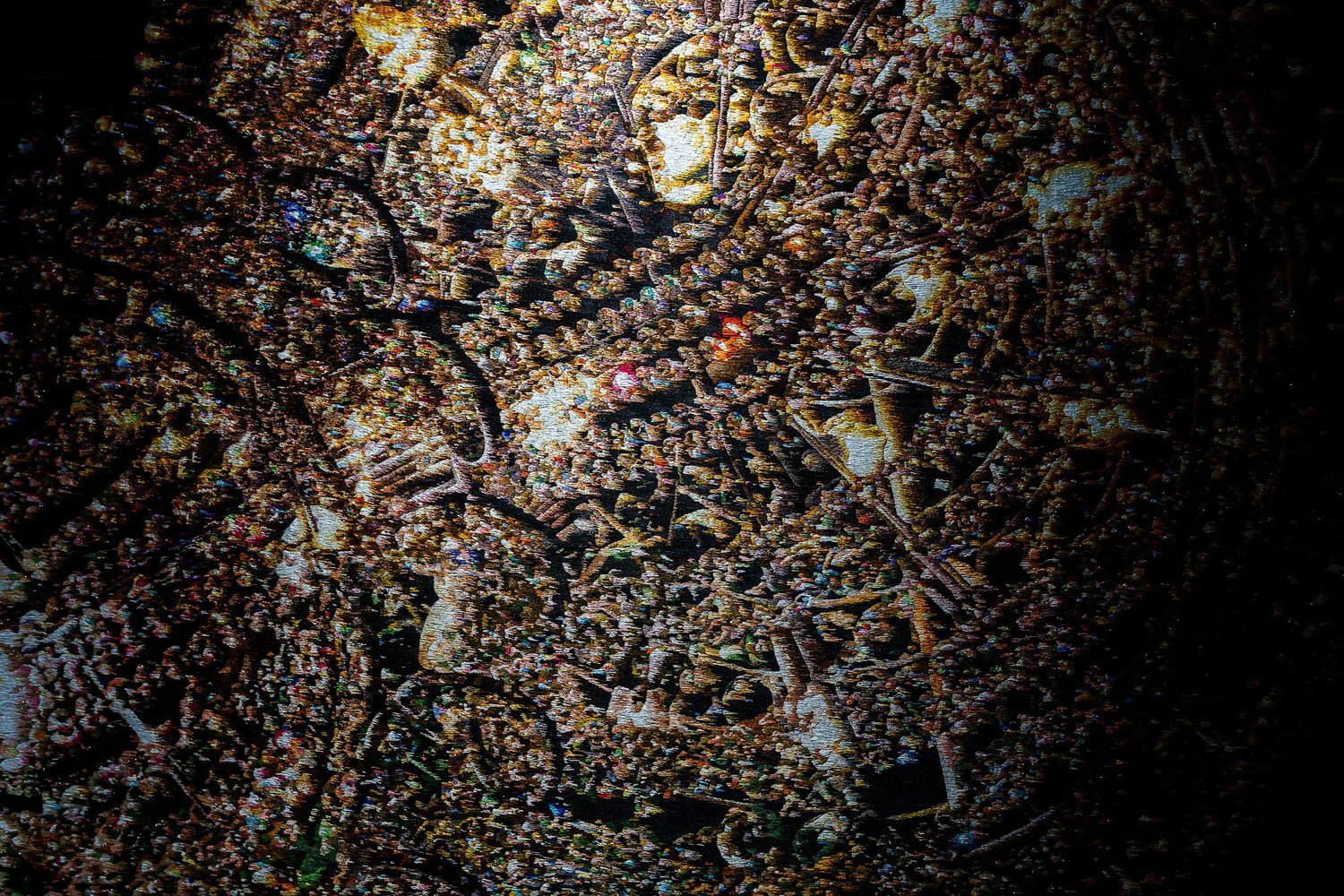NEGOTIATING BORDERS
DESIGN ANTHOLOGY / 2019
The Korean Demilitarised Zone (DMZ) runs like a scar across the land, dividing North and South Korea. Formed in 1953 as part of a ceasefire agreement, it has become a symbol of the fluctuating tensions between the two countries.
‘Negotiating Borders’, an exhibition by The Real DMZ Project at the Korean Cultural Centre UK, brings together South Korean artists who explore the relationship between their country and its isolated Northern neighbour, using the DMZ as its focal point.
Fittingly, photographic works feature heavily in ‘Negotiating Borders’; photography is highly controversial medium in North Korea, where all images need to be approved by the government, making censorship extremely prevalent.
In his series titled Blow Up, photographer Seung Woo Back displays close ups from photographs taken on a trip to North Korea. Seung originally thought that these images didn’t show anything of value — deemed acceptable by the North Korean government, they weren’t the real North Korea.
On closer inspection, however, he realised that in the background of these images were things that had been overlooked: statues, people and objects that would otherwise have been censored. Through these enlarged images, Seung manages to give the audience a peek behind the curtain.
Noh Suntag’s series Red House I. North Korea in North Korea is another example of subverting the government’s agenda through photography. His images from North Korea’s Mass Games show the regimented gymnastics of large crowds holding up coordinated squares to form a picture.
These images are approved by the North Korean government, presumably since they require and display impressive group coordination. Noh’s images capture this grand display while also revealing the imperfections — a head poking out, a square slightly skewed. They draw our attention to the individual, with all their idiosyncrasies and differences, in amongst the masses.
Kyungah Ham’s intricate works visualise her own attempts to communicate with the North Korean people. Ham commissions embroidery pieces from North Korean artisans, using middlemen and brokers to communicate with the workers and smuggle back the finished pieces (some of which don’t make it back).
She lists this ordeal within the medium of the work: “Korean hand embroidery, silk threads on cotton, middleman, smuggling, bribe, tension, anxiety, censorship, ideology, wooden frame”. The hope is that the images she’s asking these mystery workers to create — in this case, glimmering chandeliers — give them some insight into the outside world.
These works are among many in ‘Negotiating Borders’ that show South Korean artists grappling with their country’s relationship with North Korea.
Through subtle attempts to communicate with their off-limits neighbours, they create a sense of empathy and hope, circumventing the political barriers between the two countries.
By Siobhan Keam for Design Anthology



